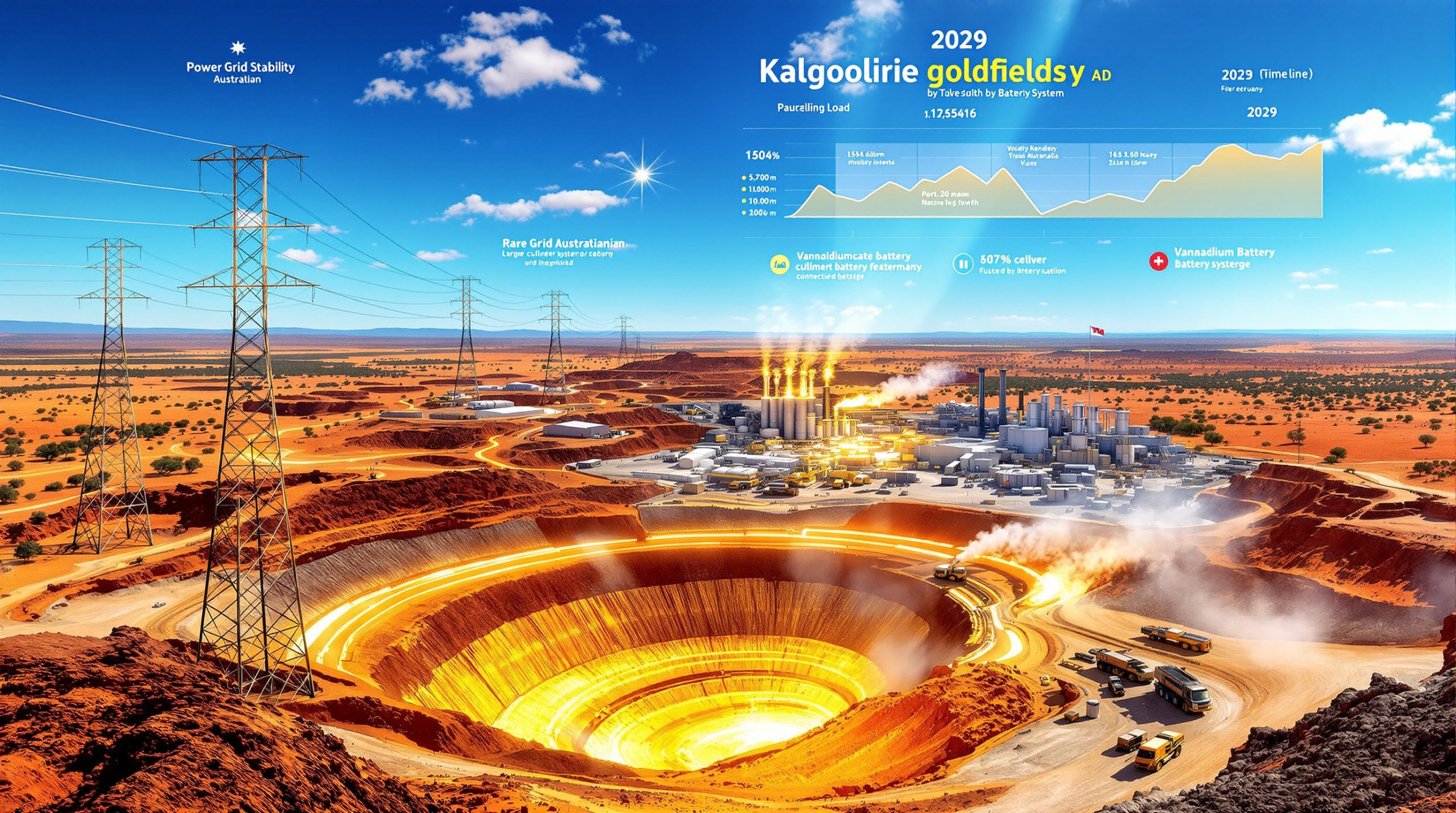The contemporary financial landscape reveals unprecedented conditions that are reshaping traditional investment paradigms. The current gold-led melt-up represents a fundamental shift in how investors must approach portfolio construction and risk management. Furthermore, this transformation extends far beyond typical market cycles, representing a paradigm change that demands fresh analytical frameworks and strategic thinking.
The emergence of sustained inflation above central bank targets, combined with fiscal constraints on monetary policy, has created conditions reminiscent of the 1970s stagflation era. However, modern financial markets operate within vastly different structures, technological frameworks, and global interconnections that amplify both opportunities and risks across asset classes.
Understanding Melt-Up Dynamics vs. Speculative Bubbles
Modern gold-led melt-up phenomena exhibit distinct characteristics that differentiate them from speculative bubbles. Unlike sentiment-driven price explosions, sustained precious metals rallies typically demonstrate consistent institutional participation, measured volume expansion, and fundamental economic drivers that persist beyond short-term momentum.
Technical characteristics of legitimate melt-ups include progressive institutional accumulation rather than retail-driven speculation. Volume patterns show steady increases in daily trading activity without the explosive spikes typical of bubble formations. The gold-led melt-up environment reflects structural economic shifts rather than purely psychological market dynamics.
Speculative bubbles typically feature parabolic price acceleration, extreme leverage usage, and widespread retail participation driven by fear of missing out. In contrast, fundamental-based precious metals appreciation demonstrates more measured price progression. This progression is supported by central bank purchases, institutional portfolio rebalancing, and macro-economic necessity rather than speculative fervor.
The current precious metals environment exhibits overbought conditions across all timeframes, yet maintains underlying structural support through monetary policy constraints and fiscal dominance theory. This combination suggests natural consolidation phases rather than bubble-like collapses. Consequently, the fundamental drivers remain intact despite technical exhaustion signals.
The Macro-Economic Foundation of 2025's Gold Surge
Structural inflation persistence above central bank targets represents the most significant macro-economic shift since the early 1980s. Unlike previous decades where disinflationary trends provided policy flexibility, current inflation dynamics constrain central bank responses and create sustained pressure on currency purchasing power.
Federal Reserve data shows core Personal Consumption Expenditure (PCE) inflation remaining above 3.0% throughout 2024-2025, significantly exceeding the 2.0% target despite aggressive monetary tightening. This persistence indicates embedded structural factors rather than transitory price pressures. For instance, our gold prices analysis demonstrates how these fundamentals continue driving precious metals valuations.
Currency debasement concerns extend beyond traditional monetary expansion to include fiscal dominance scenarios where government debt service costs constrain central bank independence. With federal debt-to-GDP ratios exceeding 120% across major developed economies, policy makers face impossible choices between inflation tolerance and fiscal sustainability.
Real interest rate analysis reveals deeply negative returns on savings despite nominal rate increases. Ten-year Treasury yields minus breakeven inflation rates consistently produce negative real returns. This eliminates the opportunity cost traditionally associated with non-yielding assets like gold and precious metals.
The gold-led melt-up reflects investor recognition that traditional safe-haven assets (government bonds) no longer provide inflation protection. This realisation drives systematic portfolio reallocation toward hard assets. Furthermore, this creates sustained demand pressure independent of short-term price movements.
The End of the Great Disinflationary Era
The 30-year Treasury yield breakout above long-term declining trend lines marks the technical end of a disinflationary regime. This regime enabled unprecedented monetary and fiscal accommodation from 2001-2022. This structural break represents more than cyclical interest rate changes—it signals fundamental shifts in economic operating assumptions.
Historical analysis shows the disinflationary period allowed central banks to implement aggressive stimulus during each economic crisis without sustained inflation consequences. The 2008 financial crisis response, 2020 pandemic measures, and subsequent policy interventions all relied on disinflationary trends. However, these measures now face different constraints that are contributing to the historic gold surge we're witnessing.
Federal Reserve policy constraints now operate under entirely different parameters. Unlike 2015-2019 when rate normalisation proceeded smoothly with inflation remaining below target, the 2022-2025 period demonstrates inflation persistence despite aggressive tightening. Consequently, this creates stagflation risks that limit policy flexibility.
The fiscal dominance theory explains how government debt levels constrain central bank independence. When debt service costs exceed 15-20% of government revenues, monetary authorities cannot raise rates sufficiently to control inflation. This effectively subordinates monetary policy to fiscal requirements without creating sovereign debt crises.
Treasury yield curve dynamics reflect this constraint through persistent yield elevation despite economic softening. The 10-year Treasury yield remaining above 4.0% while growth indicators weaken demonstrates market recognition. In addition, this shows that real rates cannot decline to previous levels without reigniting inflation pressures.
Central Bank Reserve Diversification Trends
Record gold purchases by central banks worldwide reflect systematic diversification away from traditional reserve assets. World Gold Council data indicates central bank gold accumulation exceeded 1,000 tonnes annually in 2023-2024. This represents the highest sustained purchasing levels since the 1970s.
| Central Bank Gold Holdings (2024) |
|---|
| Region |
| China |
| Russia |
| Turkey |
| India |
| Other EM |
De-dollarisation strategies extend beyond individual country policies to represent coordinated efforts toward alternative monetary systems. The BRICS+ framework explicitly includes provisions for trade settlement in national currencies, reducing dependence on dollar-based financial infrastructure.
Geopolitical hedging through precious metals accumulation reflects recognition that traditional reserve assets (U.S. Treasuries) carry political risks alongside financial risks. Sanctions applications during recent geopolitical conflicts demonstrated how reserve assets can become instruments of foreign policy. Furthermore, this motivates diversification toward politically neutral stores of value.
Central bank purchasing patterns show preference for direct physical allocation rather than paper claims or ETF structures. This preference indicates long-term strategic positioning rather than tactical trading. Consequently, this creates sustained demand pressure that supports higher price levels regardless of short-term market volatility.
The BRICS+ monetary system development includes exploration of commodity-backed settlement mechanisms, potentially creating new demand sources for precious metals. While implementation remains uncertain, the discussions alone signal significant changes in international monetary architecture.
Institutional Adoption and ETF Dynamics
Professional money manager allocation to precious metals has increased substantially from historical norms. Pension fund allocations to gold and related assets have doubled from 1-2% to 3-5% of portfolios. This reflects institutional recognition of changed macro-economic conditions requiring portfolio insurance.
Gold ETF flows reversed multi-year outflow trends during 2024-2025, with net inflows exceeding $15 billion annually according to Bloomberg ETF tracking data. This reversal indicates institutional demand recovery following several years of reduced interest during the disinflationary period.
Sovereign wealth fund positioning shows increasing precious metals allocation across multiple jurisdictions. Norwegian Government Pension Fund Global allocated 2.5% to gold-related investments. Meanwhile, Canada Pension Plan Investment Board increased commodities exposure including precious metals to 4.1% of total assets.
ETF market structure dynamics create amplification effects during gold-led melt-up periods. As institutional flows drive ETF creation, authorised participants must purchase underlying physical gold. This creates additional demand pressure beyond direct investment flows.
Risk parity strategies increasingly incorporate precious metals as volatility-adjusted return sources. With traditional bond-equity correlations breaking down during inflationary periods, gold provides diversification benefits. These benefits enhance risk-adjusted portfolio returns across institutional frameworks.
Supply-Side Constraints and Mining Economics
Peak gold production theory gains credibility as global mine output plateaus despite elevated prices. Major mining companies report declining ore grades across established operations, requiring increased processing costs to maintain production levels. Average ore grades have declined from 12 grams per tonne in 1950 to approximately 4 grams per tonne currently.
Capital expenditure cycles in precious metals mining lag price movements by 5-7 years due to exploration, permitting, and development timelines. Current mine development projects reflect investment decisions made during 2018-2020. During this period, gold prices averaged $1,300-1,500 per ounce, insufficient to justify major new developments.
Environmental regulations increasingly constrain new mine development across major jurisdictions. Environmental impact assessments, water usage restrictions, and carbon footprint requirements add substantial costs and delays to mining project development. However, these constraints reduce supply responsiveness to price signals.
| Global Gold Mine Production Constraints |
|---|
| Factor |
| Declining ore grades |
| Permitting delays |
| Environmental compliance |
| Infrastructure costs |
| Labor availability |
Mining company margins expand significantly during gold-led melt-up periods as revenue increases faster than cost structures. All-in sustaining costs (AISC) for major producers average $1,200-1,400 per ounce. This creates substantial margin expansion opportunities with current record-high gold prices above $2,500 per ounce.
Supply inelasticity becomes pronounced during sustained price advances. Physical constraints prevent rapid production increases unlike financial assets where supply can expand through derivatives or paper claims. Physical gold production requires long-term capital investment and geological discovery.
Risk Management in Momentum-Driven Markets
Position sizing strategies for volatile precious metals require recognition that momentum-driven markets experience significant interim corrections despite longer-term uptrends. Professional portfolio managers typically limit individual precious metals positions to 5-15% of total allocations. This provides meaningful exposure while maintaining overall portfolio stability.
Correlation analysis reveals precious metals provide genuine diversification benefits during financial stress periods. Historical data shows gold correlations with equity indices decline from positive levels during normal markets to negative correlations during crisis periods. This enhances portfolio protection precisely when needed most.
Hedging techniques for gold-heavy portfolios include systematic profit-taking during momentum phases and selective position rebalancing rather than complete exit strategies. The gold-led melt-up environment requires maintaining core positions while managing interim volatility through tactical adjustments. Furthermore, understanding effective gold market strategies becomes essential for navigating these conditions.
Options market strategies provide downside protection without eliminating upside participation. Protective put purchases, covered call writing, and collar strategies allow investors to maintain precious metals exposure. In addition, these strategies limit drawdown risks during inevitable correction phases.
Volatility management recognises that precious metals exhibit clustered volatility patterns. Extended periods of moderate movement are interrupted by sharp directional moves. Risk management systems must account for these volatility clusters rather than assuming constant risk parameters.
Sector Rotation and Mining Stock Selection
Large-cap producers provide 1.5-2.5x leverage to gold price movements while maintaining operational diversification and financial stability. Companies like Newmont Corporation and Barrick Gold offer geographical diversification, strong balance sheets, and dividend potential during extended precious metals bull markets.
Mid-tier miners deliver 2.5-4x leverage to underlying commodity prices but require careful fundamental analysis regarding operational efficiency. These companies often provide optimal risk-adjusted returns during gold-led melt-up periods. However, they require investors willing to accept moderate additional volatility.
Junior explorers offer 5-15x leverage potential but carry substantial individual company risks including exploration failure and financing challenges. Portfolio diversification across multiple junior positions helps manage individual company risks. Furthermore, this maintains exposure to exceptional discovery potential.
| Mining Stock Risk-Return Profiles |
|---|
| Category |
| Majors |
| Mid-Tier |
| Juniors |
Geographic diversification across mining jurisdictions reduces political and regulatory risks. Optimal portfolios include exposure to mining-friendly jurisdictions (Canada, Australia) balanced with higher-risk regions. These higher-risk, higher-reward regions (Africa, Latin America) offer exceptional resource potential.
Production cost analysis becomes critical during volatile price environments. Companies with all-in sustaining costs below $1,200 per ounce maintain profitability even during significant price corrections. This provides defensive characteristics during market downturns while participating in upside moves.
Portfolio Theory and Asset Allocation Evolution
Modern Portfolio Theory adjustments for inflationary periods require recognition that traditional 60/40 stock-bond allocations perform poorly when both asset classes face headwinds. Precious metals allocation of 5-15% improves risk-adjusted returns during these transitional periods.
Gold's portfolio insurance function differs from its role as a growth asset during different market regimes. Insurance allocation (3-5%) provides crisis protection. However, growth allocation (10-20%) captures gold-led melt-up appreciation potential during monetary system transitions.
Correlation dynamics during financial stress demonstrate precious metals' unique diversification properties. While most asset class correlations increase toward +1.0 during crisis periods, gold maintains negative or low-positive correlations. Consequently, this preserves diversification when most needed.
Real asset allocation strategies increasingly incorporate precious metals alongside real estate, commodities, and inflation-protected securities. This broader real asset framework provides comprehensive inflation protection while maintaining growth potential. Furthermore, it works across different economic scenarios.
Risk parity approaches weight assets by volatility-adjusted contribution to portfolio risk rather than dollar amounts. Gold's moderate volatility relative to individual stocks allows larger allocations in risk-adjusted frameworks. These allocations can potentially reach 15-25% of risk-budgeted portfolios.
Global Monetary System Transformation
Bretton Woods III hypothesis suggests a return to commodity-backed monetary systems following the breakdown of pure fiat currency frameworks. While full implementation remains speculative, central bank gold accumulation and CBDC development discussions indicate serious consideration. However, these discussions focus on alternative monetary anchors.
Central bank digital currencies (CBDCs) under development by major economies include provisions for precious metals backing or reserves. China's digital yuan pilot programmes incorporate gold reserves as partial backing. Meanwhile, other nations explore similar hybrid approaches combining digital efficiency with traditional monetary stability.
International trade settlement evolution beyond USD dominance includes bilateral agreements accepting precious metals as settlement options. Russia-India energy transactions, China-Middle East oil purchases, and BRICS+ trade financing increasingly utilise non-dollar mechanisms. For instance, these include gold-backed arrangements.
The petrodollar system faces unprecedented challenges as major energy exporters diversify reserve holdings and accept alternative payment mechanisms. Saudi Arabia's willingness to accept yuan for oil sales, combined with systematic gold accumulation, signals potential shifts. Furthermore, these shifts affect global monetary flows.
Monetary system stress tests reveal vulnerabilities in pure fiat frameworks during periods of sustained inflation and fiscal stress. Historical precedent suggests monetary authorities eventually resort to commodity backing during severe currency crises. This creates potential demand shocks for precious metals.
What Factors Could Trigger a Gold Market Correction?
Interest rate volatility remains the primary short-term risk factor for precious metals markets. If central banks successfully reduce inflation without triggering recession, real interest rates could turn positive temporarily. This development might reduce the relative attractiveness of non-yielding assets.
Dollar strength surges during global financial stress can create temporary headwinds for gold prices. However, the relationship between dollar strength and gold has become less predictable during fiscal dominance periods. Both assets can benefit from safe-haven demand simultaneously.
Speculative position unwinding in futures markets can amplify corrections during momentum periods. Large speculative long positions require monitoring as their liquidation can create cascading selling pressure. However, this pressure often proves temporary if fundamental drivers remain intact.
Technical Patterns Supporting the Melt-Up Thesis
Cup-and-handle formation completion on monthly gold charts indicates a major multi-year accumulation pattern reaching measured move targets. The technical setup suggests price objectives in the $4,000-5,000 range based on pattern measurement and Fibonacci extension analysis.
Gold-to-S&P 500 ratio breakout remains in early stages despite absolute gold price appreciation. The ratio continues "extremely moderate basing" behaviour, indicating significant relative outperformance potential. This occurs as the precious metals sector gains broader recognition and institutional adoption.
Fibonacci extension targets based on the 2001-2012 bull market structure project potential price levels of $3,800, $4,200, and $5,100 as sequential resistance zones. These targets align with fundamental analysis suggesting sustained inflation and currency debasement pressures. Moreover, analysts tracking gold expected record prices support these projections.
Moving average systems provide trend confirmation across multiple timeframes. Gold prices maintaining positions above 50-week, 100-week, and 200-week moving averages indicate structural uptrend continuation. This occurs despite interim volatility and correction phases.
Volume profile analysis shows institutional accumulation patterns rather than speculative distribution. Volume-weighted average prices demonstrate systematic buying interest at progressively higher levels. Furthermore, this supports price structure integrity during the gold-led melt-up progression.
Strategic Asset Allocation Recommendations
Core-satellite approaches to precious metals exposure combine stable physical allocation (3-5% of portfolios) with tactical trading positions (additional 2-10%). This captures both insurance benefits and appreciation potential during gold-led melt-up periods.
Dollar-cost averaging strategies provide systematic accumulation during volatile periods while avoiding timing risks. Monthly or quarterly precious metals purchases smooth entry prices and reduce the impact of interim corrections. However, this requires discipline during both advance and decline phases.
International diversification across gold markets includes exposure to London physical markets, North American mining companies, Australian producers, and emerging market central bank policies. This geographic spread reduces single-jurisdiction risks while maintaining global precious metals exposure.
Tax-efficient precious metals investment structures vary by jurisdiction but generally favour physical holdings in retirement accounts. ETFs in taxable accounts provide liquidity, while mining stocks offer growth potential. Professional tax advice becomes essential for substantial precious metals allocation.
Rebalancing protocols during momentum phases require discipline to maintain target allocations despite strong performance. Systematic profit-taking during 50-100% gains helps manage concentration risk. Furthermore, this maintains meaningful exposure for continued appreciation potential.
Understanding the evolving landscape requires staying informed about both technical developments and fundamental shifts. Resources like gold melt-up analysis and market acceleration insights provide valuable perspectives on current market dynamics.
Investment Disclaimer: The analysis presented reflects current market conditions and historical patterns that may not continue. Precious metals investments carry significant volatility risks, and past performance does not guarantee future results. Investors should consider their risk tolerance and consult qualified financial professionals before making significant allocation changes.
This gold-led melt-up environment represents more than cyclical precious metals strength—it reflects fundamental shifts in monetary systems, fiscal constraints, and global economic structures. These changes may persist for years. Strategic positioning requires balancing immediate opportunities with longer-term portfolio protection, recognising that traditional investment rules may not apply during periods of monetary system transition.
Want to Capitalise on the Next Major Gold Discovery?
Discovery Alert's proprietary Discovery IQ model delivers instant notifications about significant ASX mineral discoveries, empowering subscribers to identify actionable opportunities ahead of the broader market during this unprecedented gold-led melt-up environment. Explore how major mineral discoveries have generated substantial returns throughout history and begin your 30-day free trial today to position yourself ahead of the market.




